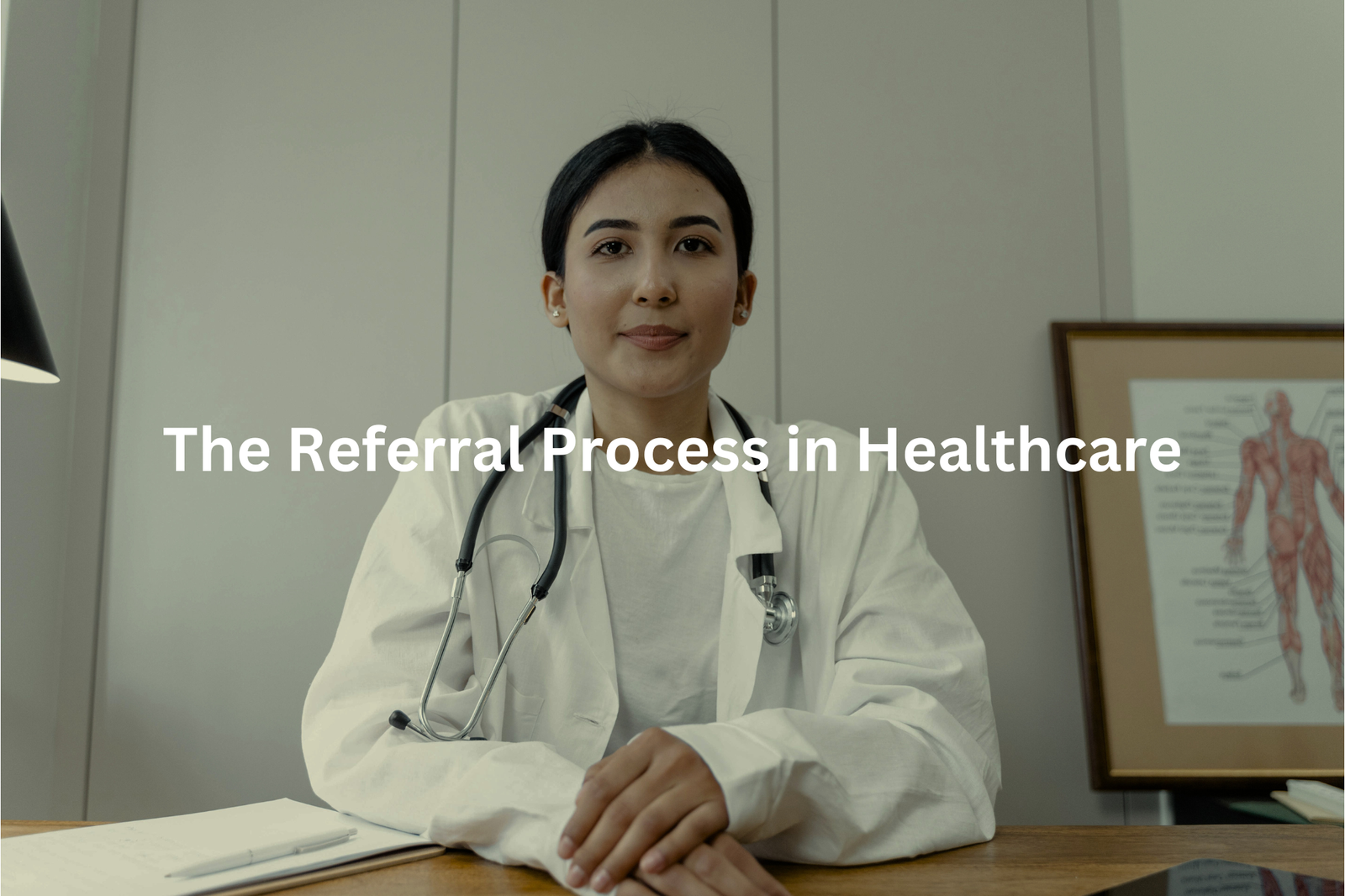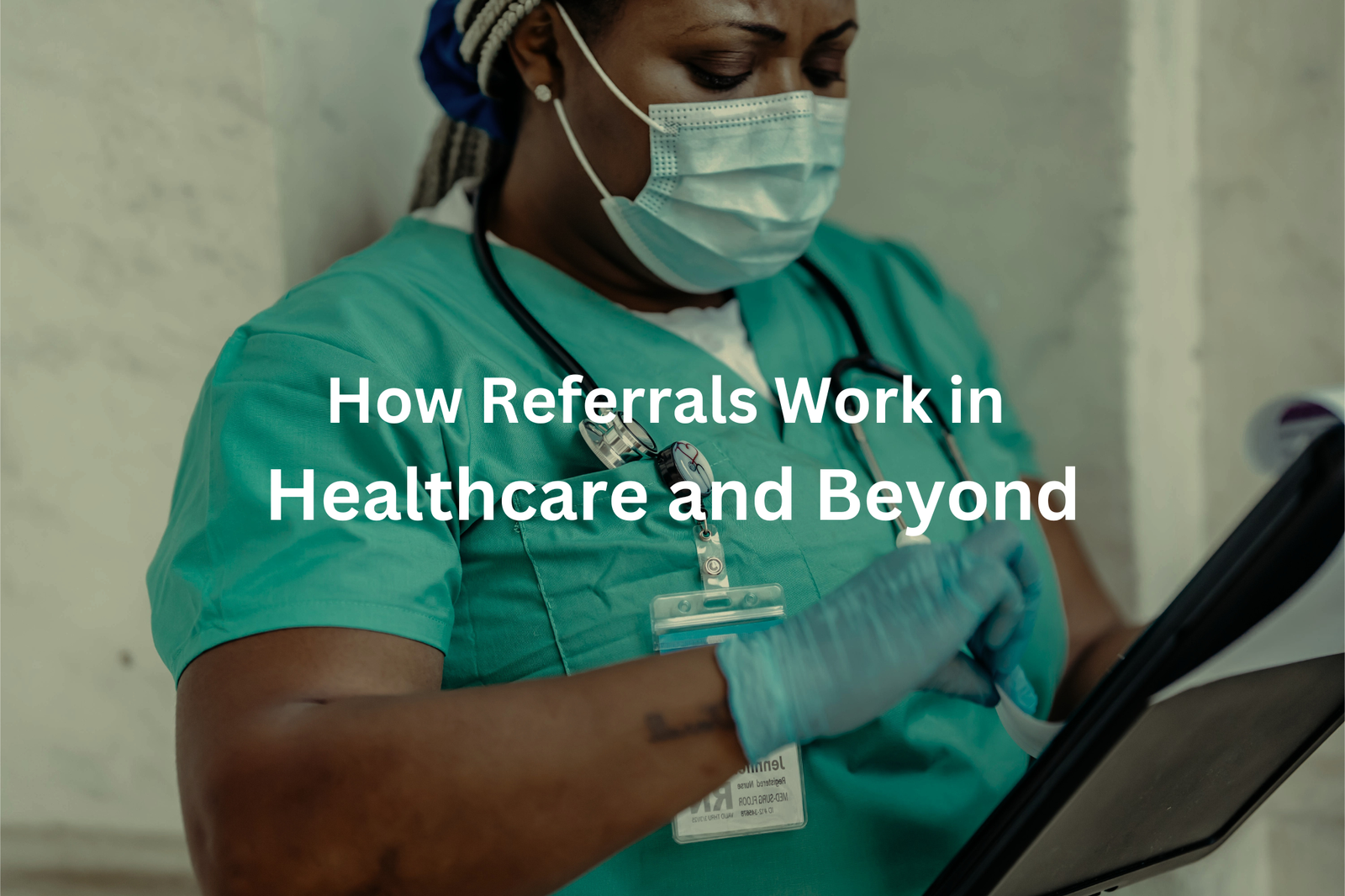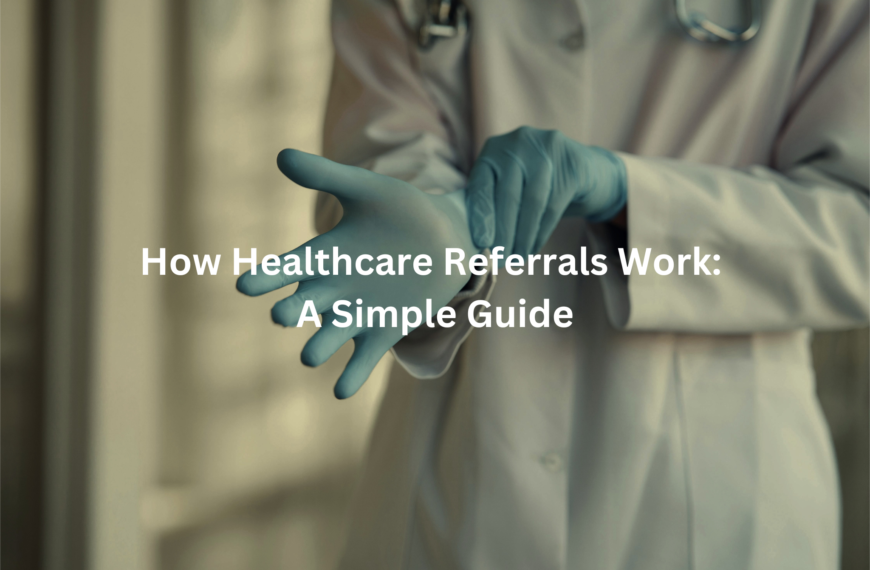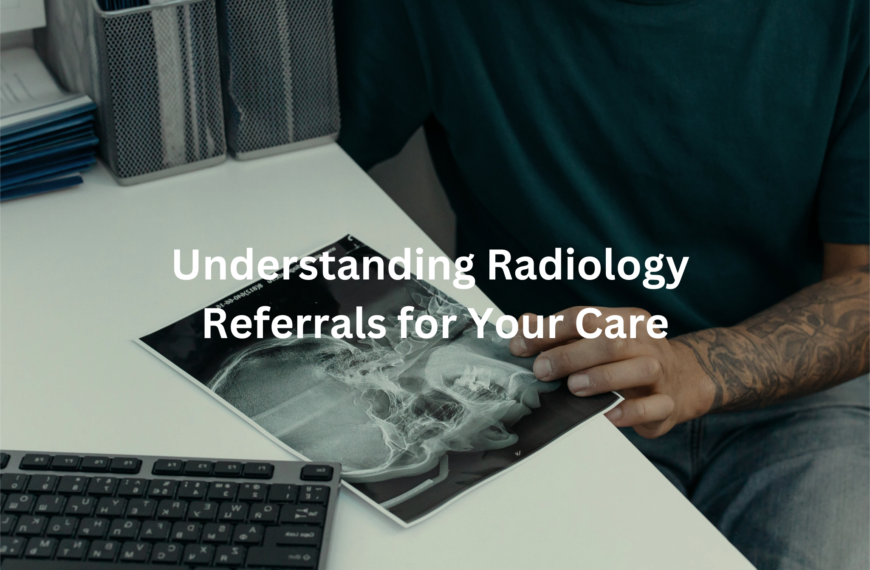Wondering how referrals work? Discover how they open doors to medical care or career opportunities with a simple process.
Referrals are like bridges that connect you to the right help, whether it’s for health issues or job opportunities. When I needed a specialist, my family doctor listened to my concerns and wrote a referral. That simple piece of paper opened the door to the care I needed.
In health, it helps you see the right doctor, and in work, it links you with potential employers. Referrals guide you to the best services or opportunities. So, if you’re curious about how they work in health and jobs, keep reading! There’s so much more to learn about their importance.
Key Takeaway
- Referrals connect patients with the right healthcare specialists.
- They help people find job opportunities through current employees.
- Understanding the referral process can make things easier.
Understanding Referrals in Healthcare and Jobs
Referrals are like a map that guides people to the care or help they need. In Australia, they’re a big part of the healthcare system. When a GP (general practitioner) sends you to a specialist, that’s a referral. It’s like saying, “This person can help you more with your problem.”
About 40% of patients who visit their GP get referred to a specialist. These referrals often include tests like X-rays, MRIs, or CT scans. Medicare, Australia’s public health system, spends over $1.3 billion each year on these specialist visits. That’s a lot of money, but it shows how important referrals are.
Usually, a referral from a GP lasts for 12 months. This means you don’t need a new one every time you see the same specialist. But if your condition changes or you need a different specialist, you might need another referral.
The government is also making things easier with electronic referrals. These digital referrals can save time and help patients get care faster. It’s important that referrals include clear details about symptoms so specialists and radiologists can figure out what’s wrong more quickly.
For referrals to work well, GPs, specialists, and patients need to communicate clearly. When everyone’s on the same page, patients can get the care they need faster, and that’s what really matters.
The Referral Process in Healthcare

The referral process in healthcare might look simple, but it’s actually a well-organised system. It begins when you visit your GP (your family doctor). You sit down, explain your symptoms, and the doctor checks you over. They might take your blood pressure, check your ears, or even listen to your heart, depending on what’s going on.
If your GP thinks you need extra care, they’ll write up a referral. This isn’t just a quick scribble. It’s a detailed letter that includes your medical history, symptoms, and sometimes even test results. I remember when my uncle hurt his back. His GP sent him to a physiotherapist with a referral that laid out everything the physio needed to know. That way, the physio could jump straight into the right treatment.
Once you’ve got the referral, you’re all set. You can book an appointment with the specialist or schedule tests like ultrasounds or blood work. Most referrals last for 12 months, so if you need follow-up care, you won’t have to go back to the doctor again(1). That’s pretty handy.
A few things to keep in mind:
- Referral lasts a year. Saves you time if you need more tests or care.
- Clear details. The more info your GP includes, the better the specialists will understand your needs.
- Book your appointment. You don’t need to go back to the GP after the referral’s in hand.
So, if you’re unsure about the process, don’t hesitate to ask your GP. They’re there to help and make everything easier.
Types of Referrals
Referrals in healthcare might seem straightforward, but they actually come in different forms, each with its own purpose. It’s all about connecting you with the right help when you need it.
There’s the Medical Referral. This is when your GP sends you to a specialist. If you’re having skin problems, for example, they might refer you to a dermatologist. It’s like saying, “I know someone who’s got more knowledge in this area,” and passing the job over to them.
Then there are Imaging Referrals. These come into play when your doctor needs a closer look at what’s happening inside your body. X-rays, MRIs, ultrasounds—these tests are like the doctor’s map, guiding them where the eye can’t go. If your doctor suspects a bone fracture or muscle tear, they’ll probably send you for one of these.
Lastly, Legal Referrals might pop up when health and law intersect. Think workplace injuries or accidents. If there’s a legal angle to your condition, a lawyer might refer you to a doctor who can provide expert testimony.
Referrals are like bridges. They link you to the right people, tools, and knowledge. If your doctor suggests one, it’s probably in your best interest to follow through. After all, it’s about getting the help you need. A simple note, but it can make all the difference.
The Importance of Employee Referrals
Employee referrals are big in Australian workplaces(2). They can make hiring faster and easier. When someone already working at a company suggests a mate for a job, it speeds up the process. It’s like getting a shortcut to a good candidate.
Tom’s story is a good example. He worked at a healthcare company and referred his friend Sarah, who was a nurse. Because of Tom’s recommendation, Sarah got an interview—and landed the job. It wasn’t just about helping out a mate. Tom’s company likely gave him a bonus for the referral. It’s a win-win.
Referrals in healthcare, where teamwork is everything, can be especially helpful. A new employee has to mesh with the team, not just do their job. That’s why companies like to rely on employees’ judgment. They know who’ll fit in and who might struggle.
Here’s how it works:
- Medical Team Fit: A referral helps find someone who understands the culture and will work well with the team.
- Employee Benefits: Companies often give bonuses or rewards for successful referrals.
- Quicker Hiring Process: Referrals can speed up hiring—both for the company and the person referred.
So, if you’re ever in a position to refer someone, think about the bigger picture. It’s more than just a favour. You’re helping the company, the team, and your mate. A little effort, but it can make a big difference.
Digital Referrals
Sources: Eastern Melbourne PHN.
Referrals are changing, and technology is leading the way. In healthcare, Australia’s pushing forward with digital health initiatives. Doctors used to write long, detailed letters for referrals. It took time. But now, they send e-referrals instead. These are fast, secure, and easy. No more waiting for weeks to see a specialist.
In the job world, referrals are also becoming more tech-friendly. Companies are using online platforms where employees can recommend others for roles. These online forms are simple, quick to fill out, and save everyone time. No more emails or paperwork. Everything’s streamlined.
Here’s how it works:
- Speed: E-referrals in healthcare get patients to specialists faster.
- Efficiency: Online job referrals let employees recommend candidates in minutes.
- Less Paperwork: Digital systems cut down on the forms, making the whole process smoother.
I think these digital upgrades are making a real difference. Whether it’s healthcare or hiring, it’s about getting people the help they need quicker. Technology saves time, reduces confusion, and connects people faster. It’s a win for everyone involved. If you’re in a position to take advantage of these changes, it’s worth it. They’re here to stay, and they’re only going to get better.
Benefits of Referrals
Referrals are pretty handy, aren’t they? They help guide people to the right help, whether it’s in healthcare or the job world. Take healthcare, for example. When a GP writes a referral, it’s like handing over a map to a specialist (they know more about the problem). So, if someone’s got ongoing back pain, a referral to a physiotherapist might just be the key to getting better. It’s not just about passing the responsibility, it’s about making sure patients get the right treatment quickly. That can mean a faster recovery, and who doesn’t want that?
In the job world, referrals are just as useful, though they work a bit differently. When someone recommends you for a job, it’s like you’ve already got a stamp of approval. Employers tend to trust these recommendations, especially if they come from someone they already know. For job seekers, it’s like a confidence booster—less pressure, more opportunity.
Here’s how referrals break down:
- Healthcare: Referrals connect patients to specialists, helping them get the care they need(3).
- Jobs: Referrals from trusted people make it easier for employers to find good candidates.
- Boosted Confidence: In both cases, referrals take some of the stress out of the process.
If you ever find yourself in a position to refer someone—whether in healthcare or work—don’t hesitate. It’s a small thing that can make a big difference. After all, it’s about getting the right people in the right places.
The Role of Communication

Talking is key, isn’t it? Whether you’re at the doctor’s office or looking for a new job, communication can change everything. In healthcare, patients need to tell their doctors about all their symptoms, even the small ones. (Like that weird ache in your knee you keep ignoring.) If you leave something out, the doctor might refer you to the wrong specialist or miss something important. For example, if you don’t mention chest tightness, they might not think to check your heart.
It’s kind of the same with job referrals. Staying connected with people who already work where you want to be can make a big difference. They might know about openings before they’re posted or give you tips on what the company’s looking for. A quick chat or email could lead to your next opportunity. So, whether it’s your health or your career, don’t hold back. Speak up, ask questions, and keep those conversations going. It’s worth it.
FAQ
What is a health professional referral?
A health professional referral is when a doctor, nurse practitioner, or other qualified healthcare provider recommends that you see a specialist or receive a specific health service. This can be for treatment, testing, or to get access to government online services.
How do I get a referral from my primary care provider?
To get a referral from your primary care provider, you’ll need to have an appointment with them. They will assess your condition and determine if you need to see a specialist or access certain health services. They can then provide you with a referral form or contact details for the specialist or service.
What is an employee referral program?
An employee referral program is a system where current employees can recommend qualified candidates for job openings at their company. Employees may receive a financial incentive or other benefits for referring high-quality candidates who end up getting hired.
How do I make a valid referral?
To make a valid referral, you’ll need to provide accurate and up-to-date contact details for the person you’re referring, as well as any other relevant information required by the organisation or service. This could include things like their name, job history, or specific qualifications.
What is an indefinite referral?
An indefinite referral is a type of referral from a healthcare provider that does not have an expiration date. This means the patient can continue seeing the specialist or accessing the health service for as long as it’s deemed necessary by their provider.
Conclusion
Referrals play a big role in both healthcare and finding jobs. They help patients meet the right doctors and allow workers to suggest good candidates for jobs. When you get a referral from someone you trust, it makes things easier. This helps patients get the care they need and helps job seekers find opportunities. Knowing how referrals work can really help you move through these processes without too much worry. They’re like helpful guides on the way.
References
- https://www.blua.bupa.com.au/ageing-well/health-checks/the-specialist-referral-process-explained
- https://talent.seek.com.au/hiring-advice/article/why-you-need-an-employee-referral-program-and-how-to-create-one
- https://www.seslhd.health.nsw.gov.au/services-clinics/directory/engage-outpatients/benefits-for-referrers




